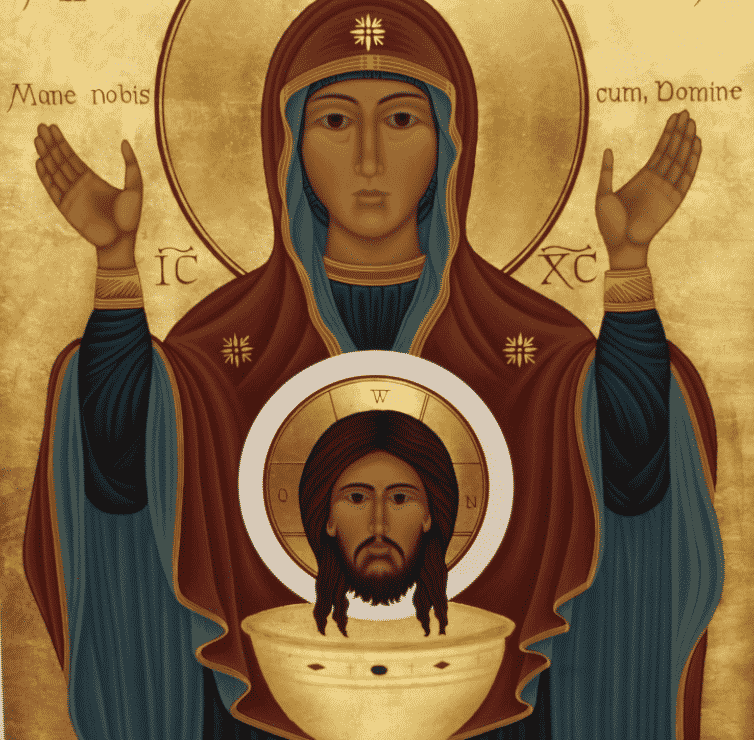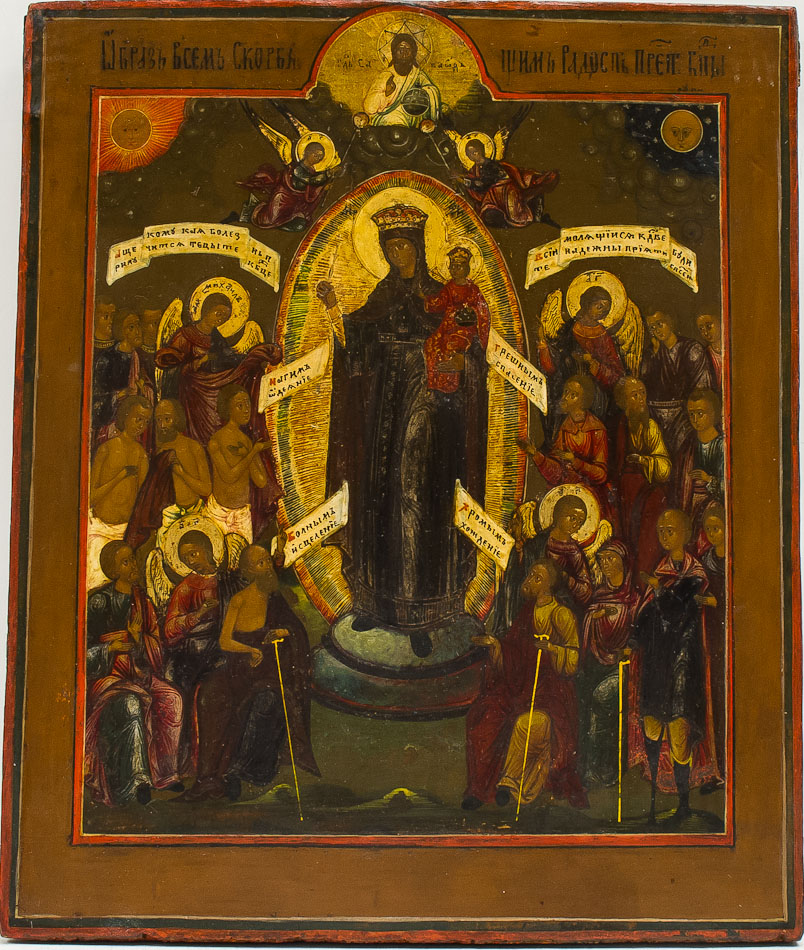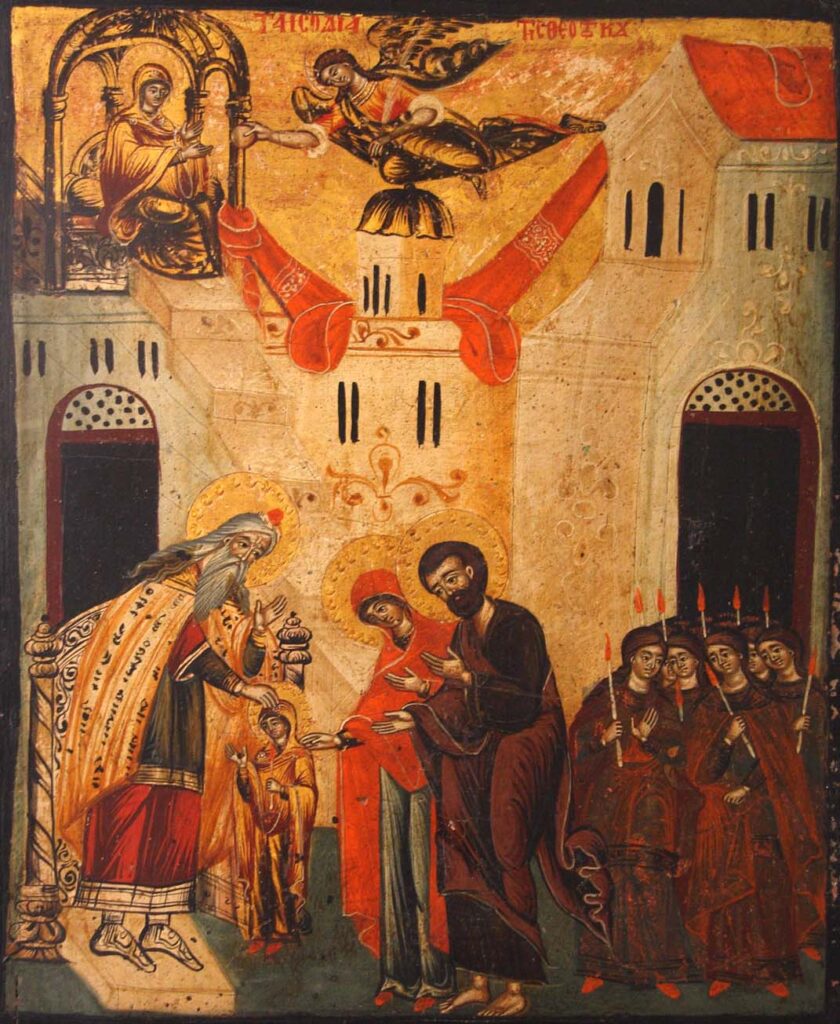
Thy rod and thy staff, they have comforted me. (Psalm 23) The great King David tells us that this rod causes a consolation, not a wound. Indeed, it is by this rod and staff that the divine table is prepared and all these other details as well: oil for the head, a cup of unmixed wine (for sober intoxication), the mercy of God that follows us so well, a long dwelling in the house of the Lord. These are the blessings implied by that sweet striking…. hence, that striking must be a good thing since it produces such an abundance of grace…. the divine rod, or staff, that brings comfort and cures by striking is the Spirit…. This shows us that the wounding of the bride, by which her veil is stripped off, is a grace. In this way the soul’s beauty is unveiled and not hidden under the mantle of darkness. (St. Gregory of Nyssa, On the Song of Songs)
Psalm 23 is associated with the Eucharist because not only does King David describe the table that the Lord prepares and the cup of blessing but because King David is said to have composed this psalm when he was hiding from King Saul, who was intent on murdering him. Hiding in the dry Judean wilderness, and on the brink of death without food or drink, he was miraculously saved by God, who nourished him with a taste of the World to Come. David gratefully burst out in song, describing the magnitude of his trust in God.
According to the traditional Jewish interpretation of the psalm, David alludes to how God provided for the Jews’ every need throughout their 40-year sojourn in the desert, and to how they will sing when God brings them back to the Promised Land; David sings, not just for himself, but for every Jew.
As Christians, we understand how King David sings for each of us as well, as we taste the food of the World to Come: the Bread of heaven and the Cup of salvation. We often read Psalm 23 either in thanksgiving after the Eucharist or in preparation before the celebration of the Eucharist.
St. Gregory of Nyssa points out that the rod and staff mentioned in the psalm are the sufferings of the faithful by which God strikes us in order to help us become more spiritually beautiful. Just as David was struck by affliction–running for his life and hiding in the desert as he and his followers nearly starved to death–we are also struck by various afflictions that are certainly hard to see as “good” as we experience them but which we can see later to have enabled us to experience the presence of God afresh. More deeply. More profoundly.
In some liturgical practices, these sufferings that lead us to experience God anew are summarized in the striking of the chest at the beginning of the Eucharist and again just before approaching Holy Communion. (St. Jerome remarked that the reason we strike our chest, rather than any other body part, is because the heart is the seat of all desires and it’s our desire to do our own will that causes suffering by dividing us most from the will of God.)
The shepherd’s staff–the Spirit of God–both wounds and heals. The wounds come, whether we want them or not. It is our choice to see them as the opportunity for healing.


